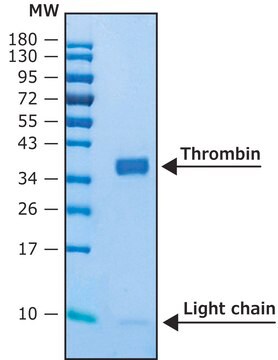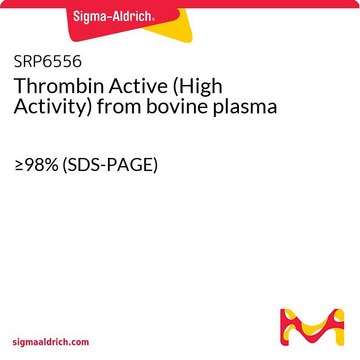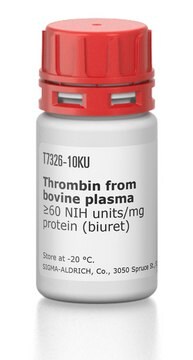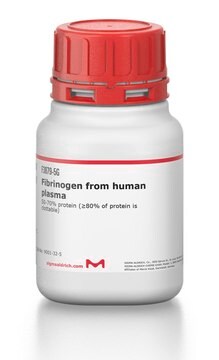SRP6557
Thrombin Active from human plasma
≥95% (SDS-PAGE), recombinant, lyophilized
Sinonimo/i:
Activated Factor IIa
About This Item
Prodotti consigliati
product name
Thrombin Active from human plasma, ≥95% (SDS-PAGE)
Origine biologica
human
Saggio
≥95% (SDS-PAGE)
Forma fisica
lyophilized
Potenza
>3000 units/mg
PM
37 kDa
Confezionamento
pkg of 1000 units
pkg of 250 units
N° accesso UniProt
Condizioni di spedizione
wet ice
Temperatura di conservazione
−20°C
Informazioni sul gene
human ... F2(2147)
Descrizione generale
Azioni biochim/fisiol
Stato fisico
Ricostituzione
Esclusione di responsabilità
Avvertenze
Danger
Indicazioni di pericolo
Consigli di prudenza
Classi di pericolo
Eye Irrit. 2 - Resp. Sens. 1
Codice della classe di stoccaggio
11 - Combustible Solids
Classe di pericolosità dell'acqua (WGK)
WGK 3
Certificati d'analisi (COA)
Cerca il Certificati d'analisi (COA) digitando il numero di lotto/batch corrispondente. I numeri di lotto o di batch sono stampati sull'etichetta dei prodotti dopo la parola ‘Lotto’ o ‘Batch’.
Possiedi già questo prodotto?
I documenti relativi ai prodotti acquistati recentemente sono disponibili nell’Archivio dei documenti.
I clienti hanno visto anche
Il team dei nostri ricercatori vanta grande esperienza in tutte le aree della ricerca quali Life Science, scienza dei materiali, sintesi chimica, cromatografia, discipline analitiche, ecc..
Contatta l'Assistenza Tecnica.









